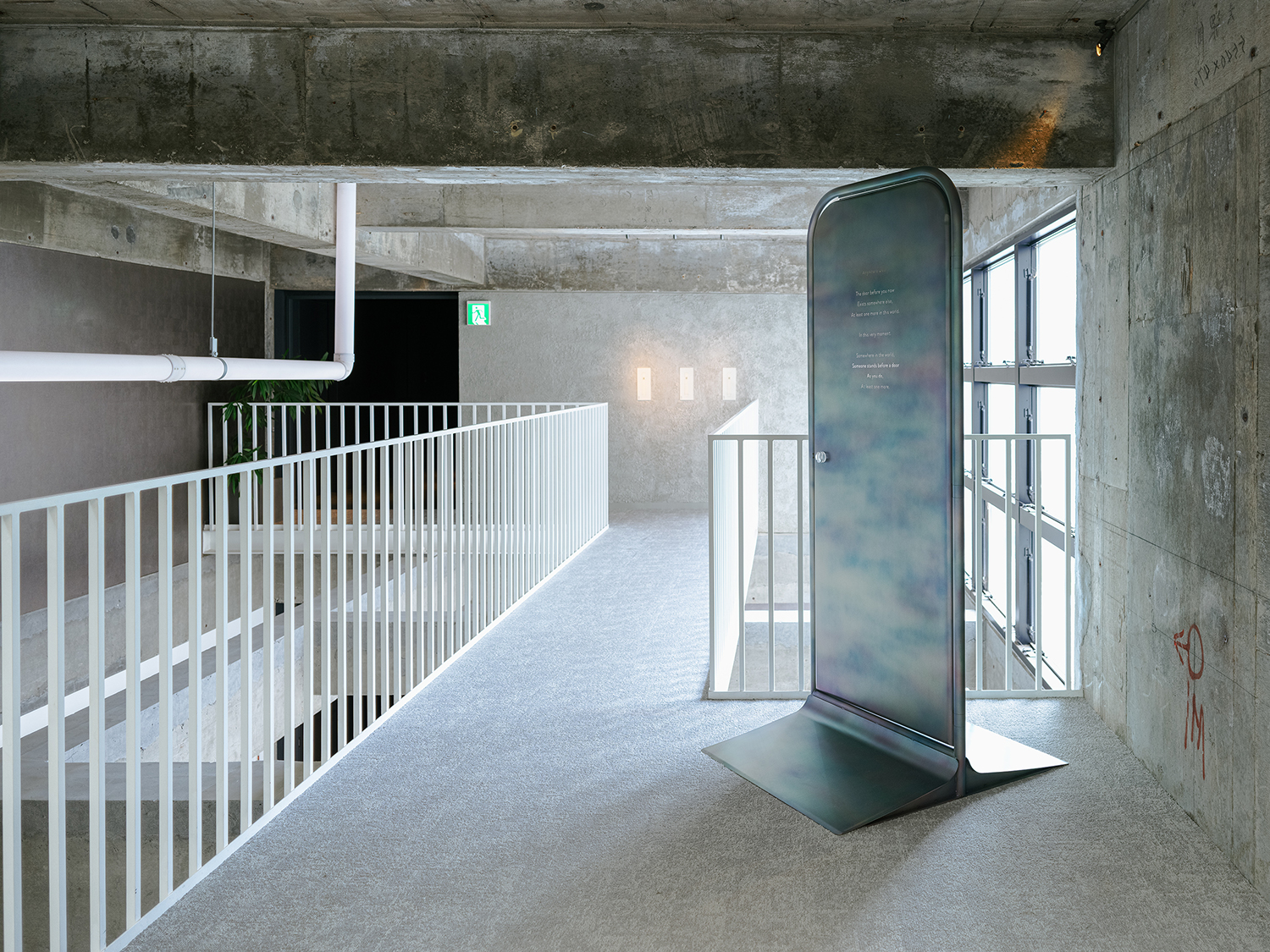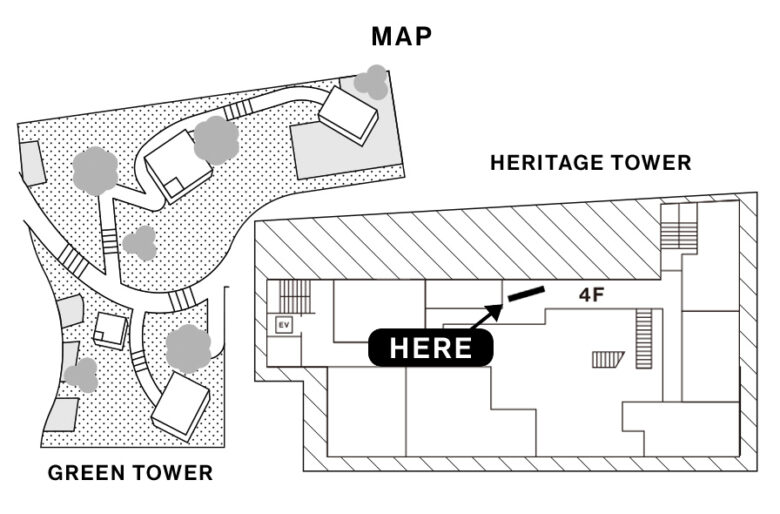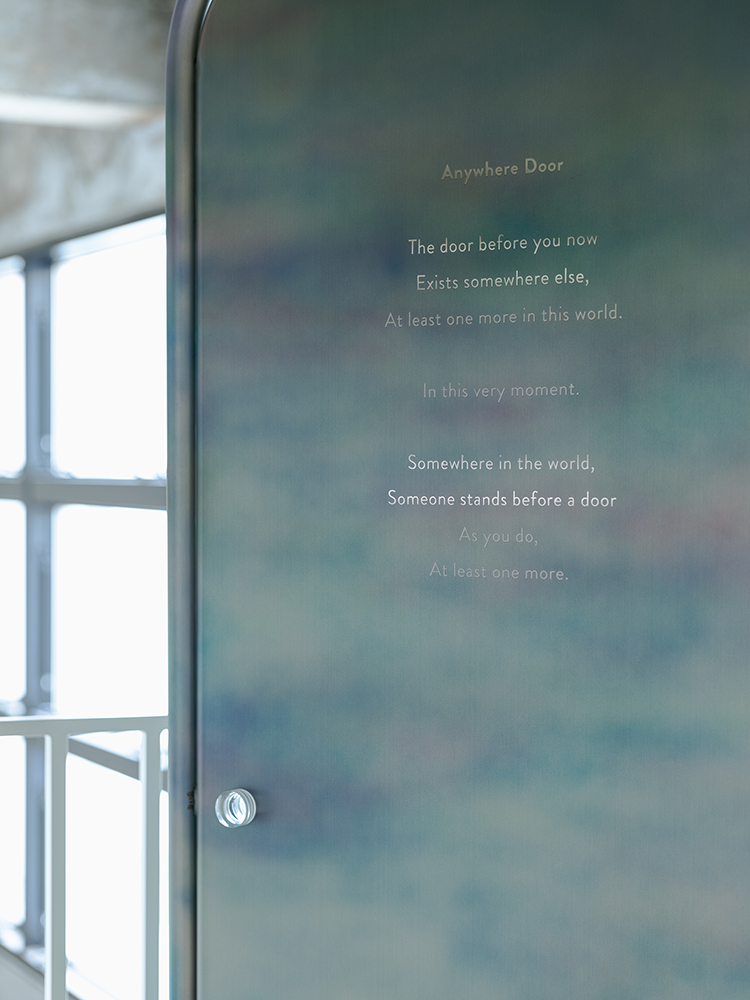Tan Yamanouchi

Anywhere Door
2025

Tan Yamanouchi & AWGL
Created by architect Tan Yamanouchi, Anywhere Door is an installation presented in four locations around the world that are personally meaningful to the artist. The project began with an invitation to participate in the 2025 edition of Time Space Existence, an exhibition organized by the European Cultural Centre and held during the Venice Architecture Biennale.
On view from May 10 to November 23, 2025, the installation addresses the exhibition’s overarching theme: Urgency to Repair, Regenerate, and Reuse. The work is on display at the Marinaressa Gardens in Venice, Italy, which is the outdoor venue of Time Space Existence. In addition, Anywhere Door is at three locations in Japan: Engakuji Temple in Kamakura, KURKKU FIELDS in Kisarazu, and SHIROIYA HOTEL in Maebashi.
The installation showcases the values of Japanese culture and craftsmanship. Through a simple door, the piece invites viewers to reflect on what lies beyond: nature, architecture, cultural memory, and human connection. Each installation site features a unique landscape and context, offering visitors a distinct experience. By unfolding simultaneously across different countries, regions, and environments, the project quietly evokes a sense of connection to somewhere else in the world.
Locations
Marinaressa Gardens, Venice, Italy
Engakuji Temple, Kamakura, Kanagawa
KURKKU FIELDS, Kisarazu, Chiba
SHIROIYA HOTEL, Maebashi, Gunma
Anywhere Door is an architectural installation. Behind each door is a different landscape, such as sky, earth, ocean, or forest. A door is a simple architectural element that people all over the world interact with daily. This work reimagines the door as a beautiful object within the landscape, and as something tactile and enjoyable to engage with. By placing the door outdoors, this work invites viewers to reflect on the nature of connection in today’s world. This is not an attempt to reject our hyper-connected age, where information, objects, and events are linked at the speed of light. Rather, it is an invitation to reflect on the deeper, more fundamental joy of being connected to the world around us, as the sky and the earth are seamlessly connected to the horizon.
This work also embraces how a single work can be perceived entirely differently depending on place and culture. It is intentionally designed as a decentralized, network-like project, consciously incorporating the differences and overlaps in response rather than being tied to a single central meaning. “Somewhere in the world, just like you.” This work celebrates the essential joy and sense of fulfillment found in connection: between people, nature, and the world itself.
— Tan Yamanouchi

Tan Yamanouchi
Born in 1986 in Sapporo, Hokkaido, Yamanouchi is the founder and principal architect of Tan Yamanouchi & AWGL (AWGL Inc., First-Class Architects Office). He holds a Master of Architecture degree from Keio University Graduate School.
Instead of merely designing buildings, Yamanouchi has sought to cultivate the ability to communicate architecture from an architect’s perspective. This led him to work at the advertising agency Hakuhodo before launching his architecture firm in 2018 with offices in Kamakura, Tokyo, and Sapporo.
Drawing inspiration from the traditional Japanese belief that all people, objects, animals, and plants are imbued with a spirit or presence, he developed a unique architectural philosophy known as the “architecture of ghosts.” His work spans a wide range of projects, including private residences, hotels, retail spaces, offices, churches, and exhibitions, regardless of scale or category.
At the same time, Yamanouchi promotes a new style of architectural practice based on the idea of being “more than an architect,” integrating design, branding, and public relations into a unified approach. Through concrete examples, he proposes an expanded role for architects in contemporary society. He was named Architect of the Year in 2017 by the Japan Association of Architectural Design and received a WA Award from the World Architecture Community in 2022.
Photo: Katsumasa Tanaka

